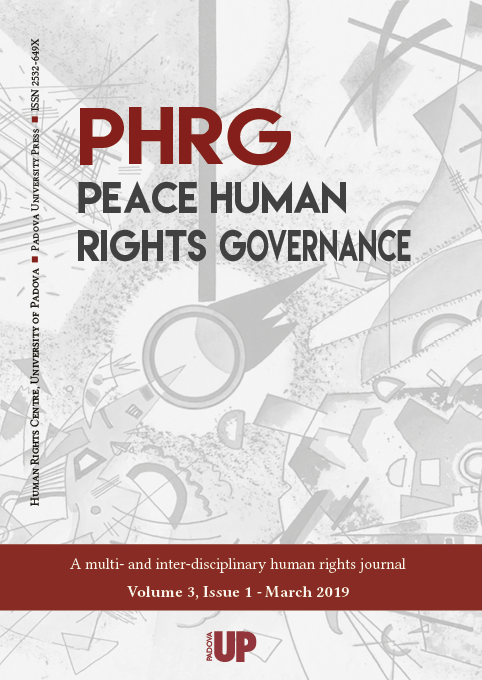Raccolte

Managing Urban Space towards Intercultural and Sustainable Cities. A Case Study of the Neighbourhood Arcella, Padua
- Sito internet
- Peace Human Rights Governance 3(1)
- Tipologia pubblicazione
- Articolo / Saggio
- Pagine
- 97-123
- Lingua
- EN
Cities are at the forefront to find effective solutions to address the challenges of environmental sustainability and of living together with difference. This article aims to investigate how a multicultural urban reality can evolve into an intercultural and sustainable city. It is based on research conducted on the multicultural neighbourhood Arcella, located in Padua, Italy. The article presents the positive and constructive processes that emerged in the neighbourhood, specifically: the creation of new narratives that foster a new image of the neighbourhood, strengthening the identity of the place and encouraging people to participate in urban life; the new tools applied for the creation of these new narratives; the role of agents of change, whose actions and ability to collaborate inspire others. The article suggests the viability of an integrated, interconnected, multidirectional and intertwined approach to boosting the creation of intercultural and sustainable cities. This approach suggests that cities can provide the possibility of becoming intercultural and sustainable if they are able to involve everybody, to favour participation, to benefit from local expertise and ideas, to offer places of conviviality and moments of meaningful encounters, to host diversity in terms of people, spaces and services. These features favour the emergence of lively and vibrant urban communities, where new visions and realities might emerge. These lively and visionary neighbourhoods, being laboratories of conviviality, offer the right and appropriate space and place for building the “cities of the future”.

